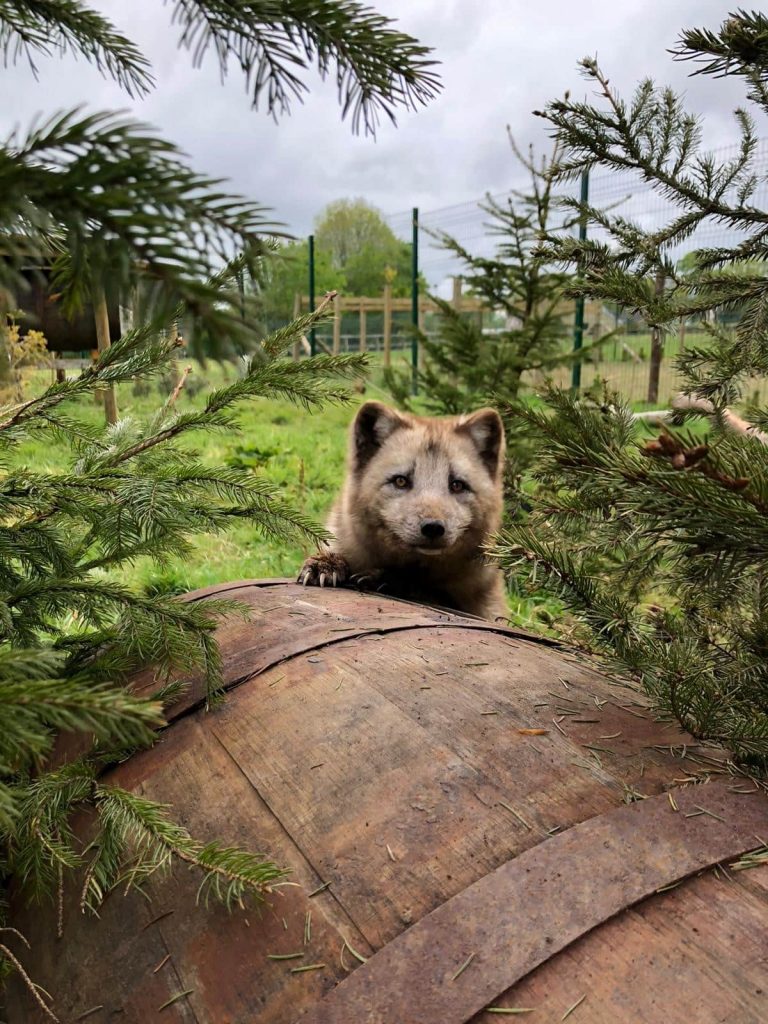
Arctic Fox Fast Facts

Overview
Meet Hamish! The arctic fox is an incredibly hardy animal that has to withstand freezing Arctic temperatures as low as –70°C. To survive in these harsh conditions they need specialised adaptions. Their main feature is their thick, white coat which maintains their body temperature at around 40°C, and helps them camouflage into the snow. Their shortened legs, ears and muzzle reduce their surface area exposed to the cold, and they even have fur on the soles of their feet like snow boots. However, this all changes in the summer. The arctic fox sheds their winter coat for a thinner coat, which comes in various shades of grey,black and brown. This helps them to camouflage into the grass and rocks of the summer tundra.

Diet
Both the white and brown colourings of their coat enables the fox to ambush rodents, birds, and even fish. Their primary food source are lemmings, but when these are short they will eat carrion, berries, and even the faeces of other animals. Particularly in winter, prey can be hard to find. Arctic foxes will follow polar bears hoping to steal some of their kill. This can be dangerous as polar bears are one of main their predators, along with wolves and golden eagles.

Reproduction
Generally a solitary species, they only come together to breed in the spring. They are monogamous and mate for life. Each pair will return to a family den every year to raise their pups. The gestation lasts 52 days, and the pair will rear between 2 to 15 pups, depending on the abundance of food. They can have two litters in a plentiful season, with the pups emerging from the den at about four weeks old. They will remain with the male and learning to hunt and forage. Following this the family will go their separate ways in the winter.

Threats + Conservation
Arctic Foxes are listed as LEAST CONCERN on the IUCN Red List. Whilst their populations in the wild are stable, their is potential for future decline. Their main threat is caused by climate change. Warming temperatures are linked to many changes in the Arctic, including reduced sea ice, melting permafrost and rising sea levels. These are causing a reduction in habitats and available food for the foxes. We can all help by reducing our impact on climate change. Simple changes such as taking shorter showers, and switching off unused plugs can help contribute towards reducing global warming.

Fun facts
1. Their feet have a layer of thick fur, like built-in snow boots, muffling their footsteps, making it harder for prey to hear them. 2. An arctic fox can smell a seal den from a mile away. 3. Arctic fox dens are used for generations—some are as old as 300 years.


